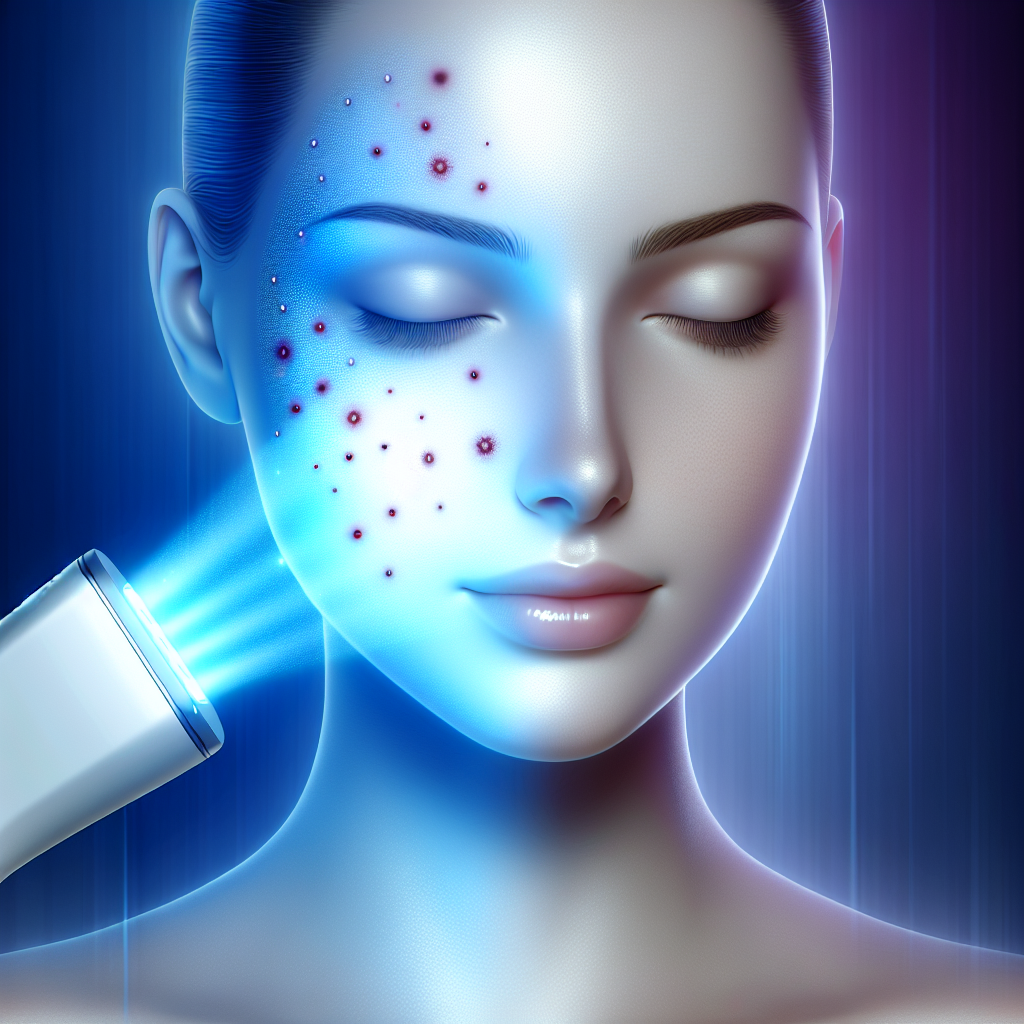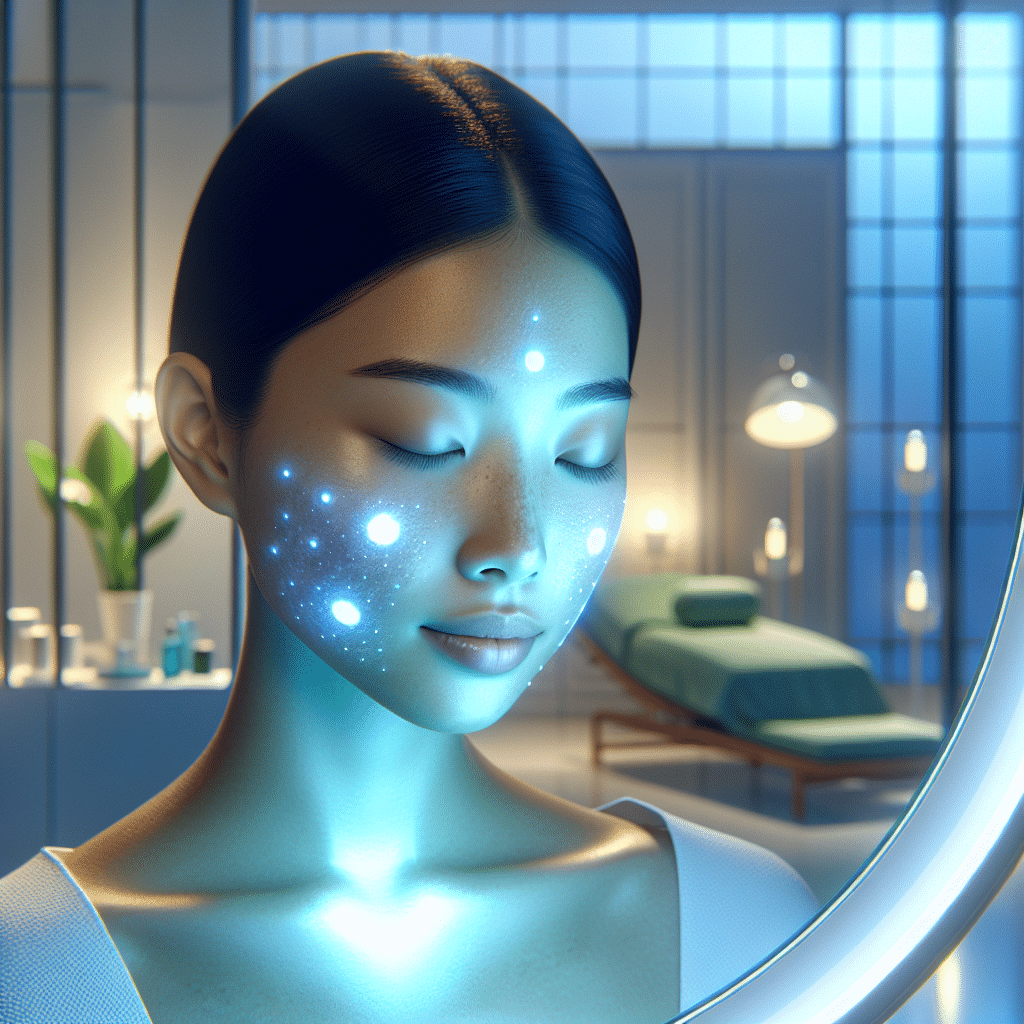How to Cure Acne: The Impact of Blue Light Therapy
Acne can be a persistent and frustrating skin condition for many people. While there are numerous treatments available, one emerging solution that’s gaining popularity is blue light therapy. But how effective is it really? In this post, we’ll explore the impact of blue light therapy on acne, its benefits, and whether it could be the right treatment for you. Let’s dive in! 🌟
Table of Contents
1. Understanding Acne
2. What is Blue Light Therapy?
3. How Blue Light Therapy Works on Acne
4. Benefits of Blue Light Therapy
5. Are There Any Side Effects?
6. How to Use Blue Light Therapy for Acne
7. Conclusion
8. FAQs

Understanding Acne
Before we delve into treatments, it’s essential to understand what acne is. Acne is a skin condition that occurs when hair follicles become clogged with oil and dead skin cells. It often leads to pimples, blackheads, or cysts, primarily appearing on the face, back, and shoulders. Factors like hormonal changes, diet, stress, and genetics can play a role in its development.
What is Blue Light Therapy?
Blue light therapy is a non-invasive treatment that uses specific wavelengths of light to target and destroy acne-causing bacteria on the skin. This therapy is often delivered through devices such as handheld wands or face masks that emit blue LED light.
How Blue Light Therapy Works on Acne
So, how does this blue light actually help in reducing acne? The blue light penetrates the skin’s pores and targets the bacteria Propionibacterium acnes, which is responsible for causing acne inflammation. By effectively killing these bacteria, blue light therapy reduces inflammation and prevents future breakouts. 🦠✨
Benefits of Blue Light Therapy
Blue light therapy offers several benefits that make it an attractive option for those struggling with acne:
1. Non-Invasive: Unlike some treatments that require topical applications or oral medications, blue light therapy is non-invasive and painless.
2. Quick Sessions: Most treatment sessions take only about 15 to 30 minutes, making it a convenient option for those with busy schedules.
3. Minimal Side Effects: Because it doesn’t involve harsh chemicals, the risk of side effects is lower compared to other acne treatments.
4. Promotes Healing: Beyond reducing bacteria, blue light therapy can also help improve the overall appearance of your skin, promoting a clearer complexion.
Are There Any Side Effects?
While blue light therapy is generally safe, some users might experience mild side effects such as temporary redness, dryness, or peeling. These effects are usually short-lived and can often be managed with a good moisturizer. It’s always recommended to consult with a dermatologist before starting any new treatment, especially if you have sensitive skin. 🔍
How to Use Blue Light Therapy for Acne
If you’re considering blue light therapy, here’s a step-by-step guide on how to incorporate it into your skincare routine:
1. Cleanse Your Skin: Start with a clean face to ensure maximum light penetration.
2. Follow Instructions: Use your blue light device as directed by the manufacturer or your dermatologist. Sessions typically last between 15 to 30 minutes.
3. Consistency is Key: For best results, use the therapy consistently. Most people see improvements after 4 to 8 weeks of regular use.
4. Protect Your Skin: Always follow up with sunscreen if you’ll be exposed to sunlight, as your skin might be more sensitive post-treatment.
Conclusion
Blue light therapy presents an exciting option for tackling acne without the need for harsh chemicals or invasive procedures. Its ability to target acne-causing bacteria directly makes it a promising solution for many. As with any treatment, results can vary from person to person, so it’s crucial to consult with a dermatologist to determine if it’s the right fit for you. Remember, clear skin is a journey, not a race! 🌿
FAQs
Q: Can blue light therapy be used for all types of acne?
A: Blue light therapy is most effective for mild to moderate inflammatory acne. It may not be as effective for severe cystic acne or non-inflammatory types like blackheads.
Q: Is blue light therapy safe for teenagers?
A: Yes, blue light therapy is generally safe for teenagers. However, it’s advisable for young adults to consult with a healthcare professional before starting treatment.
Q: Can I combine blue light therapy with other acne treatments?
A: Absolutely! Many people use blue light therapy in conjunction with topical treatments or oral medications. Just be sure to discuss your treatment plan with a dermatologist to avoid any potential interactions.
Q: How soon can I expect results from blue light therapy?
A: Results can vary, but many individuals start noticing improvements within 4 to 8 weeks of consistent use.
We hope this post has shed some light on blue light therapy and its potential as an acne treatment. If you’ve tried it or are considering it, we’d love to hear about your experiences in the comments below! 😊
